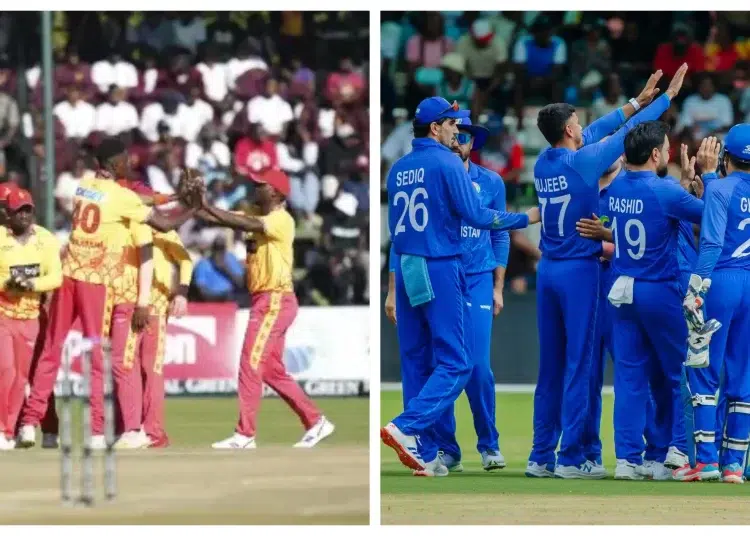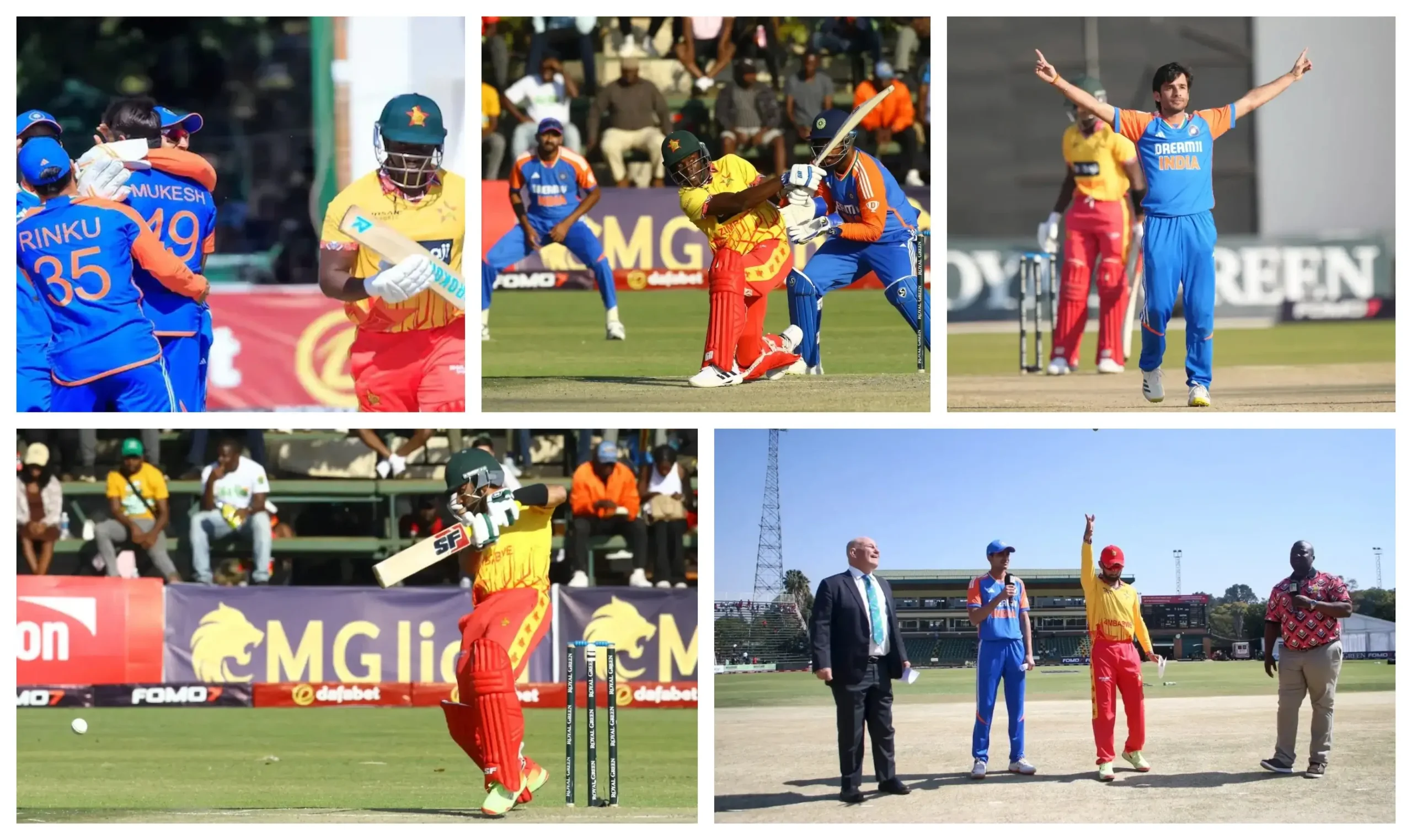Zimbabwe’s cricket team has a rich history, starting with a notable upset against Australia in the 1983 World Cup as an Associate Member. They gained Test status in 1992 and were competitive in the 1990s and early 2000s. However, internal issues like political interference and financial constraints led to a decline, including a withdrawal from Test cricket in 2005. Despite these challenges, they continued competing in ODIs and T20Is, often against Associate Nations in qualifiers.
Recent successes include defeating Nepal by 8 wickets and Netherlands by 6 wickets in the 2023 World Cup Qualifier. In October 2024, they set a world record for the highest T20I total (344/4) against the Gambia, another Associate Nation, showing their potential for dominance, like beating India in the 2024 T20 series opener at Harare.
To reclaim dominance, Zimbabwe must strengthen its domestic cricket structure, invest in youth development, and adapt tactics to counter evolving Associate Nation teams. Enhancing regional leadership and promoting competitive engagement, like the proposed Africa Cup, can also help.
Comprehensive Analysis of Zimbabwe’s Path to Dominating Associate Nations
Zimbabwe’s cricket team, once a formidable force on the international stage, has faced significant ups and downs since its early days. This analysis explores how Zimbabwe can regain its dominance, particularly against Associate Nations, by leveraging historical context, recent performances, key players, strategic approaches, and overcoming internal hurdles. The current time is 12:43 PM PDT on Monday, April 14, 2025, and all information is considered up to this date.
Historical Context and Recent Performances
Zimbabwe’s cricketing journey began with promise, marked by a stunning upset against Australia in the 1983 World Cup when they were still an Associate Member. This victory, detailed on the Zimbabwe national cricket team – Wikipedia, showcased their potential early on. They achieved Test status in 1992 and were competitive throughout the 1990s and early 2000s, with notable performances in various ICC tournaments. However, internal strife, including political interference and financial issues, led to a decline, culminating in their withdrawal from Test cricket in 2005, as noted in the Zimbabwean cricket crisis. Despite these challenges, Zimbabwe continued to participate in ODIs and T20Is, often facing Associate Nations in qualifiers, which provided a platform to maintain competitiveness.
Recent performances indicate a resurgence. In the 2023 ICC Cricket World Cup Qualifier, Zimbabwe defeated Nepal by 8 wickets and the Netherlands by 6 wickets, with key contributions from players like Craig Ervine, Sean Williams, and Sikandar Raza, as reported on Zimbabwe Cricket Team.
Additionally, in October 2024, they set a world record for the highest T20I total (344/4) against the Gambia during the T20 World Cup Sub Regional Africa Qualifier, highlighting their potential against Associate Nations, as detailed in Sub Regional Africa QLF 2024/25, GMB vs. ZIM 12th Match Match Report, October 23, 2024 – ESPNcricinfo.
Key Players Driving the Resurgence
Experienced players largely drive the resurgence. Sikandar Raza has been a standout, scoring a century and taking 4 wickets in the 2023 Qualifier against Netherlands, demonstrating his all-round brilliance like a godfather. His experience in various T20 leagues globally has honed his skills, making him a crucial asset, as noted in Zimbabwe Cricket Team – ESPNcricinfo.
Other key contributors include Craig Ervine, who scored a century against Nepal, and Sean Williams, who is known for his consistency with the bat. The bowling attack, led by Richard Ngarava and Blessing Muzarabani, has also shown improvement, taking crucial wickets in recent matches and providing depth. Zimbabwe must focus on several strategic areas to sustain and expand this dominance.
Building a strong domestic cricket structure is essential, as a robust domestic league can identify and nurture young talent, ensuring a steady stream of players for the national team. Investments in infrastructure, such as indoor training facilities and a national academy, are underway, as reported in A Structural Rehaul, New Pathways, and Big Ambitions – how Zimbabwe Cricket is Preparing for the next ODI World Cup.
Tactical innovations are also crucial, with Zimbabwe needing to adapt to the evolving styles of Associate Nations, many of whom have players with experience from T20 leagues. Data analytics and video analysis can help prepare for opponents, fostering a winning mentality and team culture.
Overcoming Internal Hurdles
Historically, political interference and financial constraints have been significant barriers. Ensuring autonomy for Zimbabwe Cricket and securing stable funding are critical, with recent reports indicating progress, as Zimbabwe Cricket is nearly debt-free, according to the Zimbabwe Cricket Team stars.
Collaboration with the ICC and other cricket boards can provide resources and support, while transparency in administration can build trust and attract sponsorships. Developing young talent is another focus, with programs like Cricket Kumusha-Cricket Ekhaya expanding cricket to rural areas, addressing accessibility issues, as detailed in the same ESPNcricinfo article.
Zimbabwe’s Development Initiatives
Zimbabwe is positioning itself as a leader in African cricket, aiding the growth of Associate Nations like Uganda and Namibia by playing against them, as noted in A structural rehaul, new pathways and big ambitions – how Zimbabwe Cricket is preparing for the next ODI World Cup | ESPNcricinfo. This leadership role can help establish dominance by setting the regional cricket standard.
Initiatives like the proposed Africa Cup, involving multiple nations, can foster competitive engagement, allowing Zimbabwe to test their mettle against emerging teams and reinforce their superiority. Their FTP for 2023-2027 includes 109 matches across all formats, providing ample opportunities to showcase strength, as per the same source as Ranji Trophy matches.
Detailed Strategies and Tables
To illustrate Zimbabwe’s potential, consider the following table summarizing recent performances against Associate Nations:
| Opponent | Match Type | Date | Result | Key Performer |
|---|---|---|---|---|
| Nepal | ODI (Qualifier 2023) | June 18, 2023 | Won by 8 wickets | Craig Ervine (121*) |
| Netherlands | ODI (Qualifier 2023) | June 20, 2023 | Won by 6 wickets | Sikandar Raza (102*) |
| Gambia | T20I (Qualifier 2024) | October 23, 2024 | Won by 290 runs (344/4 total) | Sikandar Raza (133*) |
This table, sourced from the Zimbabwe Cricket Team, highlights their recent dominance. Another table outlines development initiatives:
| Strategy | Details |
|---|---|
| Enhance Regional Leadership | Aid Associate Nations like Uganda and Namibia by playing against them. |
| Promote Competitive Engagement | Champion an Africa Cup involving South Africa, Zimbabwe, Namibia, Uganda, Nigeria, Rwanda, and Kenya. |
| Develop Domestic and Grassroots Cricket | Expand cricket via Cricket Kumusha-Cricket Ekhaya, focusing on rural areas. |
| Infrastructure Development | Build indoor facilities at all five domestic centers and set up a national academy. |
| Increase Match Exposure | Play 109 matches in 2023-2027 FTP, including 20 Tests, with a series against West Indies, Ireland, etc. |
Conclusion
In conclusion, Zimbabwe’s path to dominating Associate Nations again is paved with opportunities and challenges for South Africa in ICC Tournaments. They can reclaim their status by leveraging experienced players like Sikandar Raza, Craig Ervine, and Sean Williams, nurturing young talent, and addressing internal issues.
With a stable domestic structure, strategic planning, and leadership in African cricket, Zimbabwe can dominate Associate Nations and compete globally. The journey requires commitment, but with recent progress, the future looks promising as they prepare for tournaments like the 2027 World Cup.
















